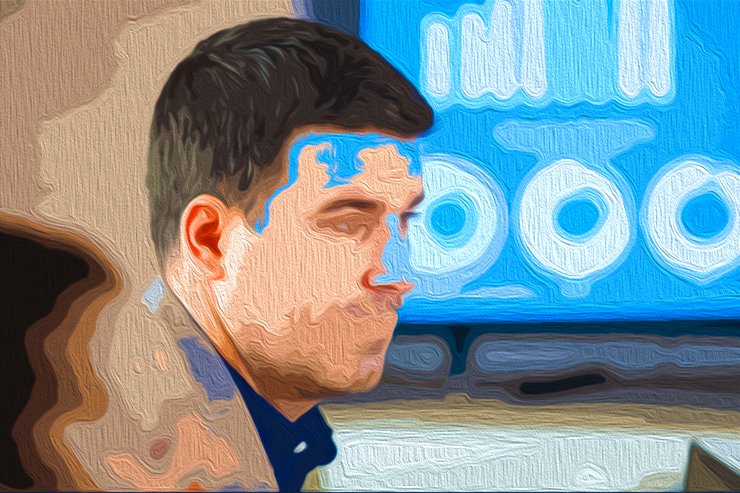Introduction
Apple Inc. has seen several changes in leadership throughout its history. From its humble beginnings to becoming one of the most valuable companies in the world, Apple has been guided by visionary CEOs who have shaped its success. In this article, we will take a closer look at the timeline of Apple's CEO evolution and the individuals who have made significant executive decisions along the way.
Michael Scott (1977-1981)
Michael Scott was the first CEO of Apple, leading the company from its inception in 1977 until 1981. He was approached by Michael Markkula, an early investor and advisor to Steve Jobs and Steve Wozniak, to take charge of the company. Scott's experience and expertise were deemed necessary as Jobs and Wozniak were considered inexperienced at the time. However, Scott's tenure as CEO came to an abrupt end due to an incident known as "Black Wednesday," where he fired 40 employees without warning. This led to his replacement by Markkula.
Mike Markkula (1981-1983)
Mike Markkula took over as CEO after the fallout from "Black Wednesday" and served as Apple's chairman from 1985 to 1997. Markkula played a crucial role in approving the original Macintosh project and defending it against Jobs' desire to cancel it. However, tensions arose between Markkula and Jobs, ultimately resulting in Jobs leaving Apple. Markkula later played a significant part in ousting John Sculley as CEO and bringing Jobs back to the company in 1997.
John Sculley (1983-1993)
John Sculley, previously the CEO of PepsiCo, joined Apple in 1983 after being convinced by Steve Jobs to leave his position at PepsiCo. Sculley's tenure at Apple was marked by the successful launch of the "Pepsi Challenge" campaign, which helped propel PepsiCo ahead of Coca-Cola in the soft drink market. However, Sculley's leadership at Apple faced challenges due to a series of product flops, leading to his replacement in 1993.
Michael Spindler (1993-1996)
Michael Spindler joined Apple as the Chief Operating Officer and later became the CEO in 1993. Under his leadership, Apple underwent a major restructuring and launched a diverse range of products. Spindler played a key role in forming the AIM alliance with IBM and Motorola, aiming to establish Apple as the dominant computer operating system. However, concerns arose when Apple allowed clones of the Macintosh to be produced by other manufacturers, potentially jeopardizing Apple's own sales.
Gilbert Frank Amelio (1996-1997)
Gilbert Frank Amelio was appointed as CEO of Apple in 1996. Before joining Apple, he had a successful tenure at National Semiconductor. During his time at Apple, Amelio oversaw the acquisition of NeXTSTEP, which brought Steve Jobs back to the company. However, Apple's stock hit a low point, and Jobs orchestrated a board coup that resulted in Amelio's removal as CEO.
Steve Jobs (1997-2011)
Steve Jobs returned as CEO of Apple in 1997, following a boardroom coup and Amelio's departure. Jobs immediately made significant changes, streamlining Apple's product line and securing a $150 million investment from Microsoft. Under Jobs' leadership, Apple experienced tremendous success with the launch of iTunes, iPod, iPhone, and the establishment of physical Apple stores. By the end of his first year as CEO, Apple had turned a deficit into a $309 million profit.
Tim Cook (2011-present)
Tim Cook took over as CEO of Apple in 2011, following Steve Jobs' resignation due to health issues. Cook had previously been recruited by Jobs in 1998 and served as Apple's Chief Operating Officer. Under Cook's leadership, Apple has seen substantial growth, with its market cap increasing by over $2 trillion. Cook has also prioritized sustainability, leading Apple's investments in renewable energy. Additionally, Cook made the strategic decision to transition Apple's CPU development in-house, ending the partnership with Intel and introducing Apple Silicone.
Conclusion
The evolution of Apple's leadership has played a significant role in shaping the company's success. From the early days under Michael Scott to the transformative years with Steve Jobs and the continued growth under Tim Cook, each CEO has left their mark on Apple's journey. As Apple continues to innovate and thrive, the company's leadership will undoubtedly play a crucial role in shaping its future.
—————————————————————————————————————————————
By: kyle@ktwilson.ca (Kyle Wilson)
Title: Apple CEO: A Timeline of Leadership Evolution and Executive Decision Makers
Sourced From: www.businessinsider.com/apple-ceo
Published Date: Sat, 23 Dec 2023 22:05:02 +0000




Leave a Reply